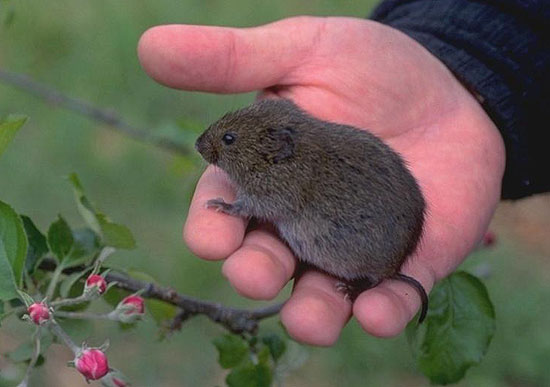Vole Troubles? Effective Control Measures for Assurance
Vole Troubles? Effective Control Measures for Assurance
Blog Article
Mastering Vole Parasite Control: Thorough Insights on Infestation Avoidance and Treatment Approaches
By recognizing the subtle indicators of vole invasion early on, we can take aggressive measures to avoid prevalent damages. In this discussion, we will discover the nuances of vole behavior, dig right into the recognition of problem signs, and reveal the most efficient prevention and treatment techniques.
Comprehending Vole Actions
Examining the foraging patterns of voles provides important understandings into their behavior and habitat preferences. By observing their foraging behavior, researchers can obtain a far better understanding of where voles like to establish their habitats and the extent of their environmental impact.
Study shows that voles display selective feeding habits, preferring seeds, roots, and roots - vole pest control. This nutritional choice affects their foraging patterns, leading them to areas rich in plant life and ground cover. Furthermore, voles are known to develop fancy tunnel systems for foraging and nesting objectives, suggesting a high level of flexibility to their surroundings
Recognizing vole habits is vital for executing targeted pest control procedures that disrupt their environment preferences and foraging tasks. By examining their behavior, professionals can develop extra effective avoidance and treatment approaches to handle vole infestations.
Identifying Indications of Vole Infestation
Vole invasions can be spotted by acknowledging specific indications of their existence in a location. One of the most usual signs of a vole invasion is the existence of surface area runways. Voles produce networks of narrow pathways on the ground that are commonly around 2 inches large. These paths are frequently discovered in verdant locations or below compost or ground cover where voles can relocate freely and browse for food.
An additional vital indication of vole problem is the visibility of tiny burrow openings in the ground. Additionally, voles are understood to leave behind chewed plant stems, roots, and bulbs near their burrow openings, indicating their feeding activity in the location.
Locating these droppings along runways or near burrow openings can confirm a vole problem. By being vigilant for these indicators, building owners can quickly address vole infestations and protect against additional damage.
Applying Positive Prevention Procedures
To successfully alleviate the risks associated with vole problems, building owners can proactively carry out an array of precautionary actions aimed at protecting their landscapes and yards. Additionally, keeping garden locations tidy and minimizing clutter where voles might conceal or nest is crucial in minimizing their presence.
Additionally, utilizing all-natural vole deterrents like castor oil-based repellents or killer pee can work as reliable precautionary actions. It is additionally recommended to regularly examine outside areas for any kind of signs of vole task, such as paths or delve openings, to resolve possible problems promptly. By embracing these aggressive avoidance methods, homeowner can significantly reduce the possibility of vole damage and keep the wellness and looks of their landscapes.
Efficient Treatment Methods
Including targeted capturing methods and utilizing accepted rodenticides are crucial elements of efficient therapy methods for managing vole infestations. Capturing can be an effective way to lower vole populaces, specifically when put strategically in their energetic runways. Snap catches and live traps can both be reliable, with the latter permitting the capture and this website moving of voles. When utilizing rodenticides, it is crucial to adhere to security guidelines to stop injury to non-target animals and pet dogs. Location rodenticides in secure lure terminals to reduce threats to unexpected targets. Additionally, environment modification, such as lowering ground cover and eliminating resources of food, can help deter my company voles from infesting a location. Regular monitoring and upkeep are likewise essential facets of successful therapy approaches to make sure that vole populaces are kept under control. By incorporating trapping, rodenticides, environment alteration, and constant surveillance, effective vole bug control can be accomplished.

Monitoring and Maintenance Tips
Maintaining a systematic schedule for tracking and carrying out routine maintenance activities is vital to maintain the effectiveness of vole insect control steps. Routine monitoring permits the early detection of vole task, enabling prompt intervention prior to problems aggravate. To successfully keep an eye on vole populations, strategically put traps can be utilized in vole runways or near burrow entries. By regularly examining these catches, homeowner can determine the level of vole activity and adjust control strategies as necessary.
Furthermore, maintaining a clean and well-kept landscape is important in vole avoidance. Cleaning away particles, such as piles of timber or thick greenery, gets rid of potential vole environments. Frequently cutting lawns and cutting greenery helps in reducing vole concealing areas and decreases their access to food resources.

Conclusion
Finally, mastering vole pest control calls for a strong understanding of vole actions, the capability to determine indications of problem, implementing aggressive avoidance actions, reliable therapy techniques, and consistent monitoring and upkeep. By taking a thorough technique to vole control, individuals can effectively take care of and protect against invasions, ultimately protecting their home and surrounding environment from damages triggered by these small rats.
In this discussion, we will certainly discover the nuances of vole habits, delve right into the identification of problem signs, and uncover the most reliable prevention and therapy methods.Integrating targeted trapping techniques and using approved rodenticides are vital elements of efficient treatment methods for managing vole problems. To efficiently monitor vole populations, purposefully put catches can be utilized in vole paths or near burrow entrances. Evaluating and fixing any type of damages to these frameworks makes sure that vole control remains reliable in safeguarding properties from invasions. By including these monitoring and upkeep techniques into an extensive vole parasite control plan, people can properly manage vole populaces and secure their properties from damage.
Report this page